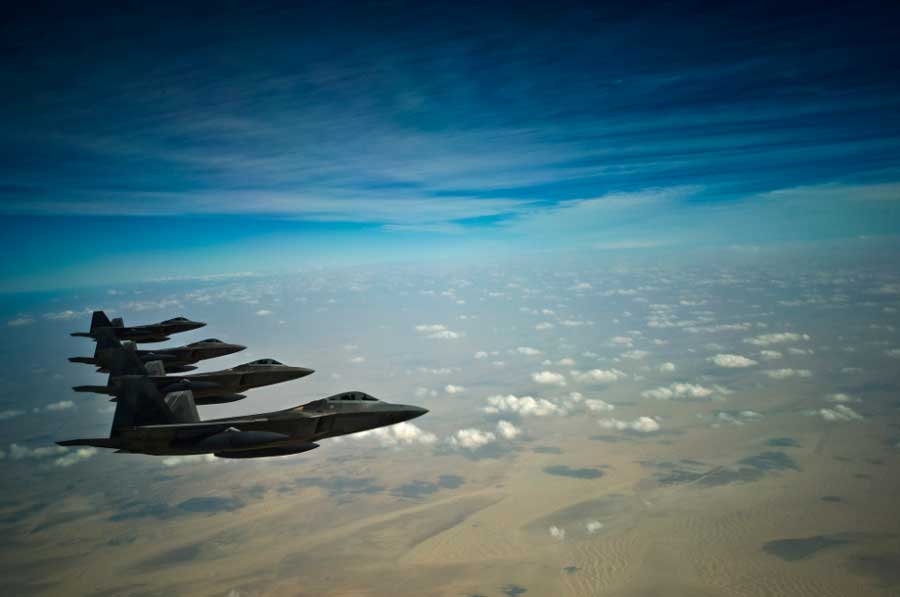Arms Sales a Necessary, But Not Sufficient Condition for Enhanced Deterrence
By Dr. Robbin Laird
10/16 /2010 – Richard Weitz’s review and assessment of the proposed Saudi arms sale discusses some of the platforms on offer, which could go with what the Saudis already have in the inventory. Platforms are not capabilities; they become capabilities when integrated into a war-fighting approach, which necessitates combat tactical and strategic integration.
Similarly, the proposed sale of F-35s to Israel will have its real meaning in terms of how the Israelis, who have an excellent track regard of combat integration, use the platform to shape an integrative con-ops to deal with threats in the region.
- For the United States, selling platforms to allies in the region begs the question: how does the USAF and USN intend to work with those platforms as allies integrate them into their warfighting strategies?
- Additionally, what will the US bring to the party, which allows allies a better warfighting capability against threats in the region, notably Iran?
- And if platforms are simply sold with little or no evidence that the US military is engaging in a comprehensive integrative strategy, one should take pause before selling those platforms?
- Are the platforms being sold working for or against a US military strategy if need be in the region?
A key worrying cloud in shaping the future is where is the F-22 in the regional strategy? The F-22 and with it the F-35 will be key elements for dealing with the quickly evolving threats in the region.
 F-22 Raptors fly in formation during a training mission Dec. 9, 2009. The F-22s and crews are deployed from the 27th Fighter Squadron at Langley Air Force Base, Va., and in the U.S. Air Forces Central area of responsibility for the first time as part of a multinational exercise where aircrews from France, Jordan, Pakistan and England. (Credit: http://www.af.mil/news/story.asp?id=123183141)
F-22 Raptors fly in formation during a training mission Dec. 9, 2009. The F-22s and crews are deployed from the 27th Fighter Squadron at Langley Air Force Base, Va., and in the U.S. Air Forces Central area of responsibility for the first time as part of a multinational exercise where aircrews from France, Jordan, Pakistan and England. (Credit: http://www.af.mil/news/story.asp?id=123183141)
And allies expect the US to bring “exquisite” systems to the fray to shape and guide a successful outcome.
Make no mistake; if the US does not bring war winning capabilities to the table, organizing allies towards a comprehensive strategy in the region will be difficult.
If the F-22 does not deploy to the region, why would allies expect the F-35 to deploy in a leading role for war winning dominance by the United States?
And associated with this is the challenge of integrating strike assets with defensive assets. Indeed a key question is how will the Saudis integrate their defensive systems with their Eurofighter´s, F-15s and other strike assets?
The UAE is a key ally in the region and it too is struggling to integrate defensive and offensive assets.
For the Israelis, a key element of the evolution of capability can be put simply: How Arrow and the F-35 be integrated?
For the US, integration of the F-22 and F-35 with Aegis is a key determinant of future capabilities, and a capability, which could lead to a war-winning strategy in the region, if needed.
But the great thing about the Aegis-5th generation aircraft combination is that its deployment is not a signaling of intention. In the last few decades, air and defensive assets were deployed sequentially; with the new 5th generation aircraft and Aegis, you deploy or you don’t. And with the deployment one is bringing integrated strike, C4ISRD and defensive assets useful in a variety of scenarios.
The sale of F-15s to the Saudis calls for F-22 deployments to the region. The ability to integrate the F-22 and then the F-35 with other aircraft, Eurofighters, F-15s, F-16s, Mirages, Rafales, is a key war deterrent strategy.
If the West and its Middle Eastern partners can demonstrate before a crisis that an integrated capability faces the Iranians, then the deterrent value of any single platform sale goes up, not down.
But if sales are simply made to provide toys to the allies to reassure them that they now have better stuff, strategic cacophony will result. And the Iranians know how to play effectively in the presence of cacophony.


